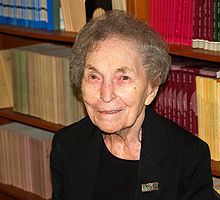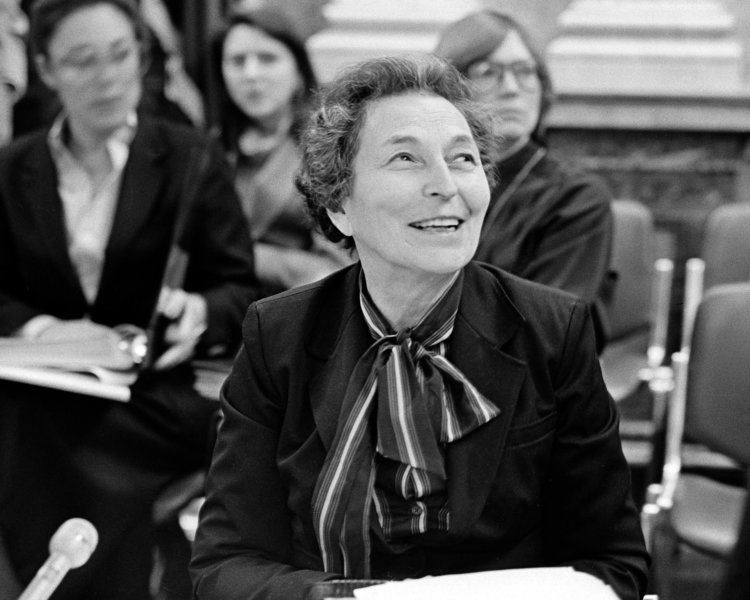Nationality United States Role Economist | Name Anna Schwartz Field Monetarism | |
 | ||
Spouse(s) Isaac Schwartz(1936–1999, his death)4 children Alma mater Barnard CollegeColumbia University Books A Monetary History of the Unite, Money in historical perspective, Strained Relations: US Forei, From New Deal Banking, Monetarism and monetary Similar People Milton Friedman, George Stigler, Frank Knight, Ronald Coase, Friedrich Hayek | ||
Anna Schwartz | Wikipedia audio article
Anna Jacobson Schwartz (; November 11, 1915 – June 21, 2012) was an American economist at the National Bureau of Economic Research in New York City, and, according to Paul Krugman, "one of the world's greatest monetary scholars." She was best known for her collaboration with Milton Friedman on A Monetary History of the United States, 1867–1960, published in 1963, which laid a large portion of the blame for the Great Depression at the door of the Federal Reserve System. She was also president of the Western Economic Association International in 1988.
Contents
- Anna Schwartz Wikipedia audio article
- Anna Schwartz introduces Candice Breitz
- Early life and education
- National Bureau of Economic Research
- Growth and Fluctuations in the British Economy
- Research with Friedman
- Financial regulation
- Other areas of work
- Later work
- Death
- Honorary degrees
- Books
- References

Anna Schwartz introduces Candice Breitz
Early life and education
Schwartz was born Anna Jacobson on November 11, 1915 in New York City to Pauline (née Shainmark) and Hillel Jacobson. She graduated Phi Beta Kappa from Barnard College at 18 and gained her master's degree in economics from Columbia University in 1935, at 19. She started her career as a professional economist one year later.
In 1936, she married Isaac Schwartz, a financial officer and fellow Columbia University graduate, with whom she raised four children. Her first published paper was in the Review of Economics and Statistics (1940), in which she, along with Arthur Gayer and Isaiah Finkelstein, wrote British Share Prices, 1811–1850. She earned her Ph.D. from Columbia in 1964.
National Bureau of Economic Research
In 1941, she joined the staff of the National Bureau of Economic Research. She worked in the New York City office of that organization for the rest of her life. When she joined the National Bureau, it was engaged in the study of business cycles.
Though she held teaching positions for only a short part of her career, she developed younger scholars by her willingness to work with them and to share her approach (a scrupulous examination of the past) to understand history better and to draw lessons for the present.
Growth and Fluctuations in the British Economy
In collaboration with Arthur Gayer and Walt Whitman Rostow, she produced the monumental Growth and Fluctuations in the British Economy, 1790–1850: An Historical, Statistical, and Theoretical Study of Britain's Economic Development. It appeared in two volumes in 1953, having been delayed by the Second World War for a decade after it was completed. It is still highly regarded among economic scholars of the period. It was reprinted in 1975.
Gayer had died before the book's first appearance, but two other authors wrote a new introduction, which reviewed literature on the subject that had published since the original publication date. They admitted that there had developed what they called an "amicable divergence of view" about the interpretation of some of the facts that were set out in the book. In particular, Schwartz indicated that she had, in the light of recent theoretical and empirical research, revised her view of the importance of monetary policy and her interpretation of interest rate movements.
Research with Friedman
Years before her first book was reprinted, another economist had joined what might be called the Schwartz team of co-authors. Prompted by Arthur F. Burns, then at Columbia University and the National Bureau who would subsequently be Chairman of the U.S. Federal Reserve System, she and Milton Friedman teamed up to examine the role of money in the business cycle. Their first publication was A Monetary History of the United States, 1867–1960, which hypothesized that changes in monetary policy have had large effects on the economy, and it laid a large portion of the blame for the Great Depression at the door of the Federal Reserve System.
The book was published in 1963, along with the equally famous article, "Money and Business Cycles", which as with her first paper was published in the Review of Economics and Statistics. They also wrote the books Monetary Statistics of the United States (1970) and Monetary Trends in the United States and the United Kingdom: Their Relation to Income, Prices, and Interest Rates, 1867–1975 (1982).
Financial regulation
She changed her opinion on financial regulation. Economists, bankers, and policy makers have long been concerned with the stability of the financial system. Schwartz, in a series of studies in the 1970s and 1980s, emphasized that price level stability is essential for financial system stability.
Drawing on evidence from over two centuries, she demonstrated that business failures do not have major consequences for the economy if their effects are prevented from spreading through the financial system. Also, individual institutions should be allowed to fail, not supported with taxpayers' money. In 1981 she gained public recognition for her role as staff director of the U.S. Gold Commission.
Other areas of work
There have been other areas of her work including the international transmission of inflation and of business cycles, the role of government in monetary policy, measuring the output of banks, and the behavior of interest rates, on deflation, on monetary standards. In an interview with Barrons in 2008, Schwartz said interventions such as injecting liquidity into markets and reacting to the credit crisis with ad hoc programs were not the answer. She has also done work outside of the United States. Some years ago the Department of Banking and Finance at City University, London, England, started a research project on the monetary history of the United Kingdom. For many years, she was an adviser to that project. She commented on papers, suggested lines of approach, came and spoke to students and at academic conferences where the work was discussed.
Later work
In 2002 to 2003, she served as president of the International Atlantic Economic Society. She was elected a Fellow of the American Academy of Arts and Sciences in 2007. After 2007, she concentrated her efforts on researching U.S. official intervention in the foreign exchange market using Federal Reserve data from 1962.
She was not afraid to speak out on the financial crisis of the first decade of the 21st century and to criticize the government's response to it, such as Ben Bernanke's support for bailouts and persistently-low interest rates She also addressed a critique of Friedman by Krugman. In addition, she wrote 9 books in her career, and published over 100 academic articles or comments.
Death
She died on June 21, 2012, in her home in Manhattan, aged 96. Her husband Isaac predeceased her in 1999; they had been married for over sixty years. She was survived by four children (Jonathan, Joel, Naomi Pasachoff and Paula Berggren) as well as seven grandchildren and six great-grandchildren.
